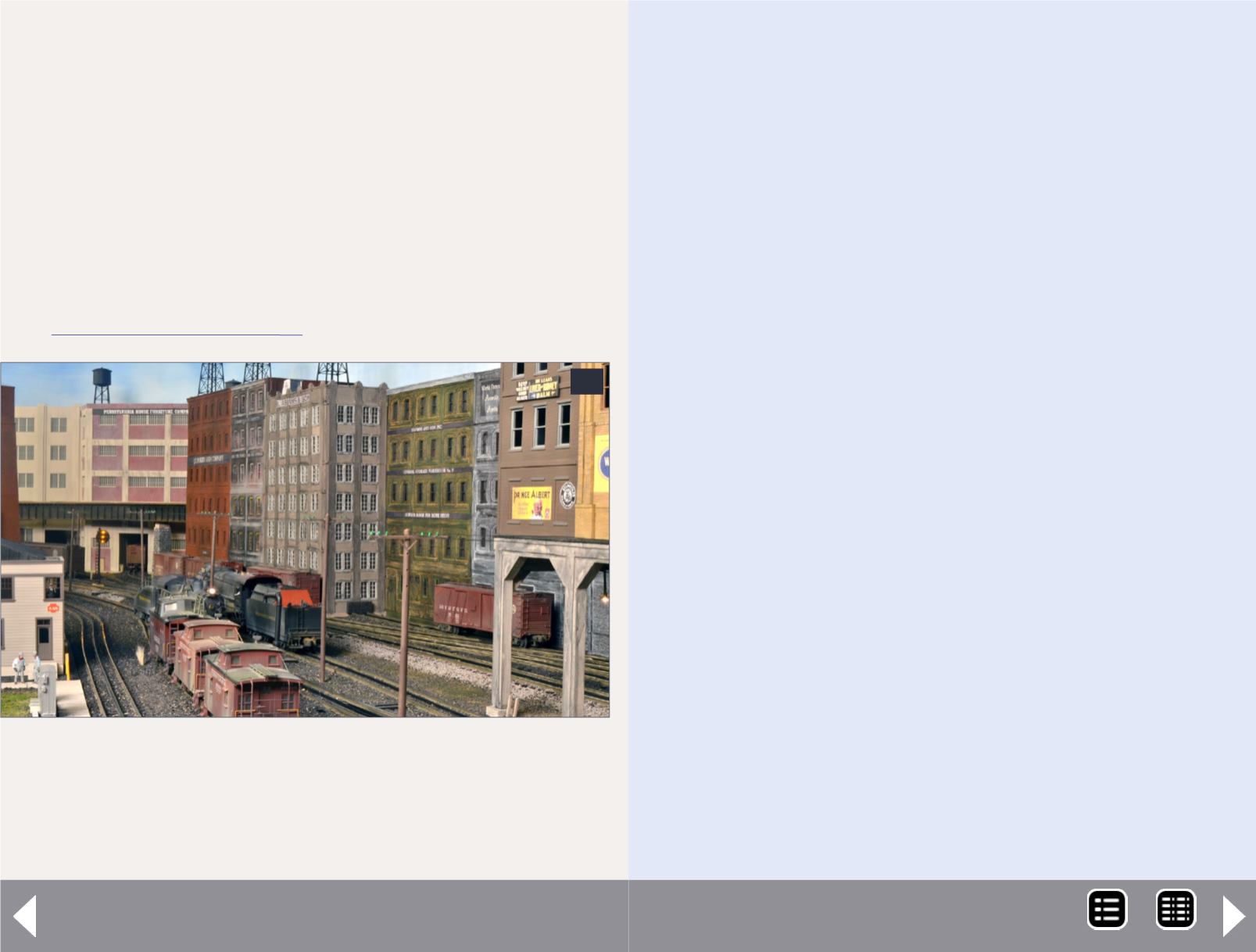
The ceiling paint helps keep dust from sifting down from above,
the plastic sheets keep dust from the concrete basement walls
out of the layout space, and the stain on the floor sealed it. The
layout accumulates very little dust thanks to these construc-
tion precautions. Next I installed the electrical outlets and track
lights, and hung drywall in the staging room, workshop, and
around the walls of the layout room. All layout room corners
were coved (curved) using 1/8” Masonite.
The track lights originally used small 60-watt “fan bulbs” in
the cans. I have 100 cans, for a total of 6000 watts of light (all
Pennsylvania & Western RR - 8
13: Your 2-10-2 has uncoupled from the train and prepares to
take water in the shadows of the Annville industrial district.
The yard switcher will pull forward and take the crossover in
the foreground to work your train.The Annville yard office is
on the left.
13
Why 3-rail O scale?
So I have this really nice model railroad with an interesting oper-
ating scheme, realistic scenery, and structures, and with nicely
weathered trains. Why the heck did I build it in 3-rail? Well, like
many in my age group, I had Lionel toy trains as a boy. After college
came a few years living in small apartments. For our first Christmas
together, my wife surprised me with an Atlas N scale PRR train set.
Yes, she’s definitely a keeper!
I built a series of three N layouts over 10 years, the last of
which was to have all handlaid code 40 rail on wooden ties for
all exposed track. I got about 80% of the main line laid, but
that layout never got beyond the benchwork with roadbed and
track. All the N scale layouts were based on the Pennsy. While
I was working on the third layout, my son turned three years
old. We got my old Lionel trains from my folks’ house and set
them up. He and I had two 3-rail toy train layouts in that house,
and I found myself spending more time on those and less on
the N scale. A job transfer to Ohio in 1992 provided the oppor-
tunity to get a full basement for a layout.
Once I realized that I was going to build a basement, and thus
would have the whole thing for a railroad, I thought about scale.
Believe it or not, I've never really been interested in HO. I think
that’s because it is the "majority" scale with many really fine lay-
outs of all sizes. If I built a really nice HO layout, it would just be
another one of many. I thought VERY briefly about returning to N,
but discarded this because of questionable running reliability (al-
though N runs really well today, compared to when I was in it), and
because I didn’t want to keep a basement full of track clean to the
degree required in N scale.
That left O scale. I had some experience with 3-rail toy-train layouts
at the time, but not with any scale modeling in O. There were some
scale brass 3-rail PRR steam locomotives that had been released.
MRH-Mar 2014


